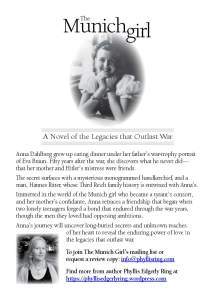Phyllis Edgerly Ring's Blog, page 23
September 22, 2015
A planet-sized re-balancing act

Photo: Karen Olin Darling
In honor of the Equinox, a day of stillness when the Grand Design brings all life back into balance, let’s celebrate the very great reset unfolding in our time:
” … the balance is already shifting; force is losing its dominance, and mental alertness, intuition, and the spiritual qualities of love and service, in which woman is strong, are gaining ascendancy.
Hence the new age will be an age less masculine and more permeated with the feminine ideals, or, to speak more exactly, will be an age in which the masculine and feminine elements of civilization will be more evenly balanced.”
~ ‘Abdu’l-Bahá, (from remarks made aboard the S.S. Cedric upon arrival New York Harbor 1912) 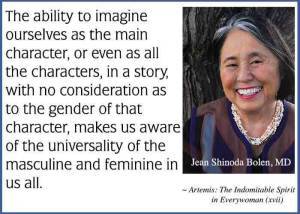
John Gerzema and Amy S. Choi, authors of / contributors to a study that led to publication of The Athena Doctrine have observed:
John: ” … ‘feminine’ values don’t belong to one gender – they are a form of innovation and competitive advantage inside us all. In our surveys, 81% of people said that man or woman, you need both masculine and feminine traits to thrive in today’s world.”
Amy: ” … we’re not saying that women are ‘born this way’ or that they are ‘naturally’ more empathetic or open. Rather, these are skills that have been traditionally segregated or labeled as part of women’s domain, and thus have been historically undervalued. When in truth, being ‘feminine’ actually make all people more human, and helps them become the best version of themselves.” 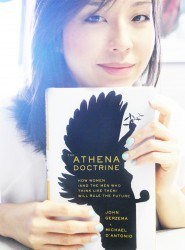
Highly recommended reading about that shifting balance – find the rest of this interview about:
The Athena Doctrine: How Women (and the Men Who Think Like Them) Will Rule the Future:
http://hellogiggles.com/lead-like-a-goddess-the-athena-doctrine


September 19, 2015
The same winds blow on us all
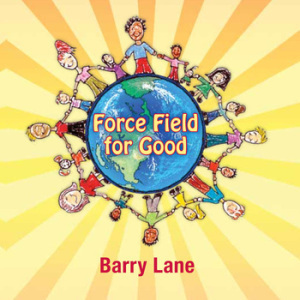
More info.: http://www.discover-writing.com/store/section-childrens-and-fun.html#force-field-for-good-book
There’s a game I used to share in my conference-planning days because it could quickly unite a diverse group of people who didn’t yet know each other.
Called “The West Wind Blows,” it has players sit in chairs arranged in a circle while one person in the middle calls out different sorts of descriptors such as “The West Wind blows on everybody wearing socks” or “The West Wind blows on everyone who’s ever gone skiing.” If the description applies to you, you stand up and scurry to another place in the circle.
In order to be a good sport and keep things lively, you have to move out of the “safe” comfort zone of simply swapping places with someone next to you and strike out into the circle itself. If the chairs are all filled before you find a new one, you get the privilege of being the one in the middle trying to think up the next description until you’re able to rush to an empty seat again.
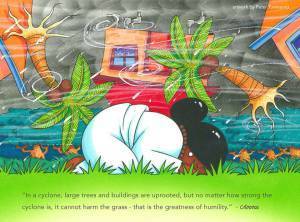 At its best, this game keeps everyone moving around, often for quite some time, and just about all ages can play it together. Within minutes, this resource can weld a motley group of 50 adults and children into a bustling, giggling mass of happy humanity all focused on the same thing. It’s one of those opportunities that gives everyone permission to let down barriers to knowing each other when we’re sometimes not even sure why those barriers exist in the first place.
At its best, this game keeps everyone moving around, often for quite some time, and just about all ages can play it together. Within minutes, this resource can weld a motley group of 50 adults and children into a bustling, giggling mass of happy humanity all focused on the same thing. It’s one of those opportunities that gives everyone permission to let down barriers to knowing each other when we’re sometimes not even sure why those barriers exist in the first place.
As many games do, it also offers chances to model or reinforce positive kinds of behaviors. You have to cooperate and pay attention. You have to move skillfully and quickly while being considerate and careful of others’ movements.
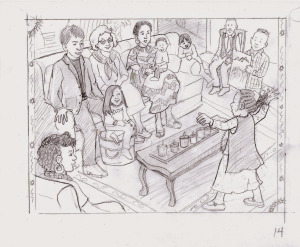
Illustration: http://www.leonahosack.com/
And in order for the game to really be enjoyable, it absolutely has to avoid becoming competitive. In groups that can include grandparents, teens, schoolkids, parents, and toddlers, it doesn’t usually take long before big people start helping the very small ones and kids suddenly start giving up their seat to an elder or peer who’s having trouble getting out of the middle. (Not that being in the middle is such a bad thing.)
The variation and balance of similarities and differences is what seems key in this game, what keeps everyone attentive, and ensures that all will be included. Curiously, your best chance at getting out of the middle is to be as inclusive as possible. The greater the number of people you get up and moving, the greater your chances of finding a chair — and the more fun everyone has. You might say that inclusiveness is the game’s objective, and the way you reach it is by focusing on how much more similar we are than different.
A coming together of the world’s peoples in a relationship as harmonious, open, and welcoming as a good game of The West Wind Blows is clearly a need of our times, if a far more complex prospect. There seems little doubt that creating such a universal culture of collaboration and conciliation will require great, persevering effort on our part, as well as creativity, and compassion.

Image: http://janeeharper.com/
The job is big, the tasks complex, and many of the elements quite daunting. But the promise is big, and the reward unprecedented, if we can find the wisdom and will to truly embrace the diversity with which the Creator has gifted us and let it be the path to unity it’s intended to be.
Bahá’u’lláh reminds: “The well-being of mankind, its peace and security, are unattainable unless and until its unity is firmly established. … Deal ye one with another with the utmost love and harmony, with friendliness and fellowship.”
And, lest we forget, feel frustrated, or think this all may not be achievable, it helps to remember the darkness it will dispel: “So powerful is the light of unity that it can illuminate the whole earth.” 
No matter what kinds of winds may blow on us, or how hard, it does appear that we’ll benefit far more by facing them together.
From Life at First Sight: Finding the Divine in the Details
Find more about the book at:


September 15, 2015
Beyond all walls and worry
GLEANINGS FOUND HERE AND THERE:

Photo: Karen Olin Darling
Be empty of worrying. Think of who created thought. Why do you stay in prison when the door is wide open?
Move outside the tangle of fear-thinking. Live in silence. Flow down and down in always widening rings of being.
~ Rumi
What is drawing? How does one get there? It’s working one’s way through an invisible iron wall that seems to stand between what one feels and what one can do.
How can one get through that wall? — since hammering on it doesn’t help at all. In my view, one must undermine the wall and grind through it slowly and patiently.

Photo: David Campbell / http://www.gbctours.com
And behold, how can one remain dedicated to such a task without allowing oneself to be lured from it or distracted, unless one reflects and organizes one’s life according to principles?
And it’s the same with other things as it is with artistic matters. And the great isn’t something accidental; it must be willed. Whether originally deeds lead to principles in a person or principles lead to deeds is something that seems to me as unanswerable and as little worth answering as the question of which came first, the chicken or the egg.
But I believe it’s a positive thing and of great importance that one should try to develop one’s powers of thought and will.

Photo: https://www.etsy.com/shop/DKirkupDesigns
~ Vincent van Gogh
When you hold on tightly to a part of your life that’s not working, it has no room to heal. Whether you’re unhappy with your love life, finances, career, home, or health, let go …If you hang on to these aspects of your life because of fears such as “What if I can’t find someone or something better?” then the situation will only worsen.
However, if you’re willing to open your hands and allow the situation to be freed, one of two situations will occur: Either it will be washed away from you and replaced by a better situation, or the situation will heal in a miraculous way. Try not to control the outcome of your troubling situation. Let go, and let God help you!
~ Doreen Virtue


September 12, 2015
Eternal life begins as we acquire what lasts forever

Image: Judy Wright
When the span between the trustworthy and the treacherous seems chasm-wide in the world of human doing, we can remember:
~ Nothing that exists remains in a state of repose. Everything is either growing or declining.
~ Kind forces are drawing us away from preoccupation with “fighting evil” toward creative, collaborative, and limitless building of the good.
~ We are here to mirror to each other the attributes of the Creator.

Image: Judy Wright
~ Every attribute and faculty we possess, known and unknown, comes into balance as we strive to align the acts of giving and receiving.
~ An eternal life begins when we begin to acquire what lasts forever.
~ The gift of this age, bestowed on all humanity, is the right each one of us has to investigate reality independently.
~ The natural outcome of that expresses itself in willing, joyful acts of service — the personal and collective pathway for building the good.
How am I honoring and expressing that potential on my path?
How will it free my heart from the weight of a world’s unreal illusions this week?
 Authors Ron Tomanio, Diane Iverson and Phyllis Ring explore these themes in With Thine Own Eyes: Why Imitate the Past When We Can Investigate Reality?.
Authors Ron Tomanio, Diane Iverson and Phyllis Ring explore these themes in With Thine Own Eyes: Why Imitate the Past When We Can Investigate Reality?.
Find more about the book at:
Print version at: http://www.bahairesources.com/with-thine-own-eyes.html


September 8, 2015
Preview: Cover and Excerpt from The Munich Girl
COMING THIS FALL –
The Munich Girl: A Novel of the Legacies That Outlast War
Here is a first glimpse of the novel’s cover, and an excerpt from the book.
I’m delighted with the way cover artist / book designer Marina Dutzmann Kirsch has captured the mood and atmosphere of the story.
The following scene is set in the vicinity of Berchtesgaden in Bavaria and I’m grateful to illustrate it with images from David Campbell of http://www.gbctours.com.
The post also features a few of Eva’s Braun’s photographs from the place and period.
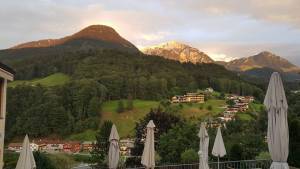
Photo: David Campbell / http://www.GBCTours.com
Excerpt from The Munich Girl:
For my extra day of freedom, I planned to linger over breakfast at a table with a sunny view of the mountains. But the dining room was a frenetic symphony of clinking and clattering when I arrived and the maitre d’ stuck me in a dark corner.
I had just poured my coffee when a young male voice shrilled, “Fräulein Peggy Adler?” from the entrance.
I turned as he reached my table in a handful of long strides. He wore the stiff uniform of Hitler’s Leibstandarte: dark tunic, breeches, tall boots, and rounded helmet. All that was missing was the rifle customarily slung over the shoulder.

Photo: David Campbell
“Come with me, please.”
Terror struck so hard, I couldn’t speak—not even to ask where. Especially not that. It seemed incriminating. At last, I stammered, “I-I—”
“You have been requested for an interview,” he said.
What kind of interview? I still couldn’t find words to ask. Should I get my stenographer’s pad? Or was this about questioning me?
“We have a car waiting outside.” His tone was threaded with impatience, as though I were already taking too long, being too slow to understand. I’m surprised he didn’t check his watch, tap his foot. His face had a youthful softness. He was perhaps 19 or 20. I thought of my brother, Peter.

Photo: David Campbell
I noticed a waiter at the neighboring table and glanced at my unfinished cup of coffee, as though it might offer some possibility of reprieve—he would insist I stay, since I hadn’t finished.
He also seemed uneasy around the guard as he said, “No trouble, Madam. We will keep your table for you.”
But would I return to it?
Then I remembered my co-workers, and Erich, and blanched with fear as cold as the sweat that rose instantly on my neck. Hadn’t I been careful enough, yesterday? Had I said too much? Had someone besides Eva been listening, or had my cohorts from the Foreign Office somehow been found out?
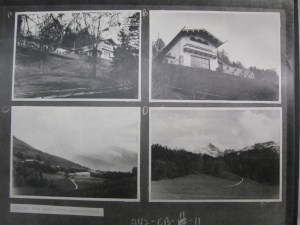
From Eva Braun photo albums National Archives
My mind raced to the worst of all possibilities—they’d been apprehended. I refused to let that thought take root, claimed my mind back from it the way I try to rescue my breath from panic each night in the air-raid shelter back in Berlin.
Appear unfazed and cooperative. I’d heard this tactic from Erich and others in the Resistance. If stopped by the Gestapo, or called in for any reason, seem slightly surprised, untroubled, and entirely willing to comply.
I reached to gather my things. I had only my purse, and the book I’d brought along. “Will we be going far?” I found courage to ask.
“It is right nearby.”
When we reached the car, his brisk movements included a snap of his heels as he opened the door for me. Clearly, he wasn’t going to manhandle me like a suspected criminal. Not yet. 
I clambered into the back, toward the middle, and closer, of the two bench-like seats. The mammoth Mercedes had as many huge tires as a delivery truck. Its convertible top was down, and bright sun blinded my eyes.
The young uniform joined the driver in front. The car exited the Platterhof parking lot, made a hard left, and rolled down a sharp incline, though only a short distance.
Goering’s house was somewhere off to the right, hidden by trees. I’d learned recently that beneath us was a burgeoning network of tunnels and bunkers under construction, a subterranean complex that those who dwelt above ground might not even know was there. Perhaps it would open up suddenly and swallow us all. 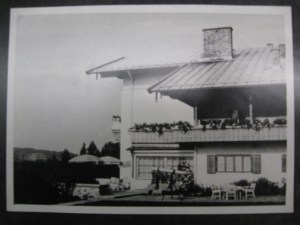
The car blocked the narrow road when it stopped at a guardhouse barely big enough for one person to stand inside. Behind it was the Hotel Türkenhof where Aunt Paula and I had once stayed. It looked to be in use as barracks of some kind. Is that where they were taking me? The uniform turned, and said, “Your papers, please.”
I had them ready in anticipation of this, though I’d already gone through all the rigmarole of admission to the Führer Zone two days ago.
He took them, got out, and strode to the guard shack.
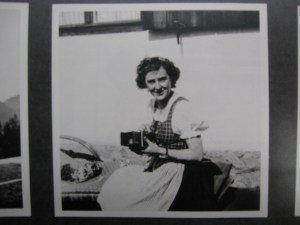 I’d been taken in for questioning once before, after I’d accompanied Jewish children to England as an escort with the Kindertransport. A petty Nazi bureaucrat summoned me because of my dual citizenship. I’d dressed conservatively in a simple cotton print skirt that hinted at a dirndl’s lines, and a borrowed white blouse tied loosely at the throat so the top half of my décolletage was visible, while the rest remained virtuously concealed.
I’d been taken in for questioning once before, after I’d accompanied Jewish children to England as an escort with the Kindertransport. A petty Nazi bureaucrat summoned me because of my dual citizenship. I’d dressed conservatively in a simple cotton print skirt that hinted at a dirndl’s lines, and a borrowed white blouse tied loosely at the throat so the top half of my décolletage was visible, while the rest remained virtuously concealed.
During my inquisitor’s first burst of questions, I’d offered simple answers with a demeanor of complicit meekness. Finally, I’d evoked tears by imagining the inevitable fate of that Jewish child I’d seen pulled back through the train window into her father’s arms. “Can’t you imagine how thankful I am that Germany is my birthplace?” I nearly shouted at him. “That my mother is so faithful?”
More advice from those in the Resistance: act indignant, insulted even, at the very dishonor of being suspected of disloyalty.
“There are many spies,” he said. “Dual citizenship makes an excellent cover.”
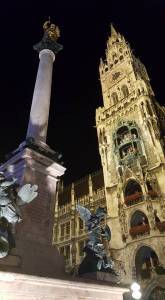
Photo: David Campbell
It does, indeed, my thoughts concurred.
“How can you even suggest such disgrace?” I tried to sound hurt. “When my British blood is disgrace enough, for me?”
Then I’d covered my face in the refuge—and strategy—of sobs. It had been over-dramatic, but I wanted to leave no doubt in his mind. I used my best high German for these impassioned declarations. Once I saw he was softening, I lapsed into the Schwäbisch dialect I’d detected in his own speech, thanking God for my ear for nuance and language.
The inquisitor turned almost paternal, even invited me for coffee. I’d had to pretend disappointment, say I was expected home to help Mutti.
“You are the kind of maid who will assure the Fatherland’s triumph!” he’d avowed, like the final line of some Wagnerian drama.
“Whatever you do, use the language of the current view, and mold it to your needs,” Erich had advised me before I’d accompanied those Jewish children to safety.
It was the only way to deal with these fools. These very dangerous fools.
Click on image at the left for more information about
The Munich Girl:
A Novel of the Legacies That Outlast War
To join the book’s mailing list, email: info@phyllisring.com.


September 5, 2015
Our unique spiritual fingerprint

Photo: Karen Olin Darling
When we give or receive acts of service, we become engaged in the process of investigating our own reality and gradually, more is revealed about who we really are.
In that process, we gradually disperse the dust and veils of an illusory identity that has been formed by living in a culture that is immersed in blind imitation of the past. Once those veils are lifted, we encounter and discover our true and unique individual identity.
The process begins with a genuine act of service that is always motivated by the attributes of God that are latent within each of our hearts. It is our free-will decision that brings forth these “gems of inestimable value”. 
How we choose to show love, receive forgiveness, and express other attributes in an act of service is our own spiritual fingerprint, and just like our physical fingerprint, it is unique to us.
Nobody in the past, present or future will love exactly the same way that each of us does.
Each time that we give or receive, an attribute of God — a facet of the infinite jewel — is revealed. In this way we make an invaluable contribution because we have added to what can be perceived of divinity. 
And because we are all capable of making such a contribution, this means that each individual is absolutely indispensable.
Excerpted from With Thine Own Eyes: Why Imitate the Past When We Can Investigate Reality?
Find more about the book at:
Print version at: http://www.bahairesources.com/with-thine-own-eyes.html


September 2, 2015
Toward the territories of spirit
GLEANINGS FOUND HERE AND THERE:

Photo:
The pain of yesterday is the strength of today.
~ Paulo Coelho
In normal life we hardly realize how much more we receive than we give, and life cannot be rich without such gratitude. It is so easy to overestimate the importance of our own achievements compared with what we owe to the help of others.

Photo: David Campbell / http://www.GBCTours.com
~ Dietrich Bonhoeffer
A journey can become a sacred thing:
Make sure, before you go,
To take the time
To bless your going forth,
To free your heart of ballast
So that the compass of your soul
Might direct you toward
The territories of spirit
Where you will discover
More of your hidden life,
And the urgencies
That deserve to claim you.

Artwork: Judy Wright
~ John O’Donohue
When you resist the flow of life, what you are actually resisting is your own inner nature, for everything that happens to us is a reflection of who we are.
This isn’t a mystical statement; it is part of the apparatus of perception. To perceive is to grasp the meaning of something.
~ Deepak Chopra


August 30, 2015
Eternity is a part of every true gift

Artwork: Judy Wright
My friend, Carol, gave me a wonderful surprise at about the last place I’d have expected it — her funeral.
She received the devastating news about her cancer the same day her employer told her that she would soon be out of a job.
Things happened even faster for Carol, after that – fast especially for someone who, like most of us at this stage of life, was never looking to include life-threatening illness in her life experience. By early September, she’d been given three months to live. Her goal was to make it through all three of them, which, God willing, would be just enough time to see her first grandchild.
I made a trip to see Carol that week and brought a small CD player I’d picked up. She’d been feeling so terrible that even reading and watching TV were impossible, but she could still enjoy listening to music. However, her own CD player had broken.
 There was so much I couldn’t do for her. This, at least, seemed like one small thing I could offer. Knowing how weak she was, I searched for a little machine that was lightweight and, hopefully, something she’d be able to move herself.
There was so much I couldn’t do for her. This, at least, seemed like one small thing I could offer. Knowing how weak she was, I searched for a little machine that was lightweight and, hopefully, something she’d be able to move herself.
The day I saw her, despite the fact that she was essentially drifting between worlds, she, as always, received my gift graciously.
But my heart was saddened by two things that were clear from the moment I watched the home-health nurse call for an ambulance to take her to the hospital: Carol was never going to use that CD player, and she wasn’t going to live to see her grandchild born.
A week later, I sat in a small Victorian church whose beautiful stained-glass windows flooded its pews with rosy light. Waiting for Carol’s funeral service to begin, I was thinking about her life, and all of the things that would never be, when I noticed that among the vases of cut flowers and the pretty candles that had been set out on a small table up front, there was something familiar.
Read the rest at BoomerCafe:
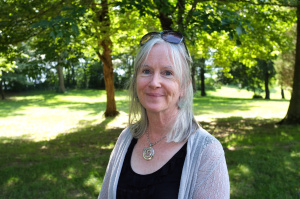 http://www.boomercafe.com/2014/07/14/touching-story-love-friendship/
http://www.boomercafe.com/2014/07/14/touching-story-love-friendship/
Adapted from Life at First Sight: Finding the Divine in the Details:


August 27, 2015
The long trail of The Munich Girl
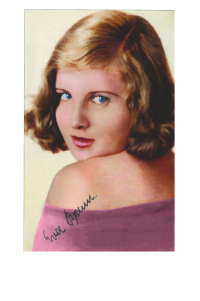
Photo provided by Ed Fusco
I’ve twice donned a pair of white cotton gloves and pored over Eva Braun’s nearly three dozen photograph albums at the National Archives.
Each visit had its own rhythm and pace. The first, in the spring of 2010, was a kind of mad-rush count-down to get through them all before the Archives’ five o’clock closing time. This involved leaving at least 15-20 extra minutes on each end for passing through security, checking in or out, and depositing or retrieving my belongings from a locker.
I couldn’t take so much as my own pencil into the resource room where her albums are housed in several piles of volumes hard-bound in dark blue. Overwhelmed as I encountered them for the first time, I was attempting to encompass 33 years of one life in the equivalent of two afternoons.
 Years of reading and research later, including interviews with some of those who met the subject of my search, my approach on the second visit was more like forensics. I was watching, amidst those several dozen books of her photos, most arranged quite haphazardly with little attention to chronological order, for patterns and connections that form a larger picture.
Years of reading and research later, including interviews with some of those who met the subject of my search, my approach on the second visit was more like forensics. I was watching, amidst those several dozen books of her photos, most arranged quite haphazardly with little attention to chronological order, for patterns and connections that form a larger picture.
There are many photos whose settings and significance I could spot more readily, based on who was present, clues in the background of interiors and landscapes, even the clothes people were wearing.
But it was that most-elusive quarry that I was watching for — the evidence of the emotional side of things.
I couldn’t help but zero in on the externals on my first visit, when I felt time rushing past me so quickly as each album opened on an unknown world. 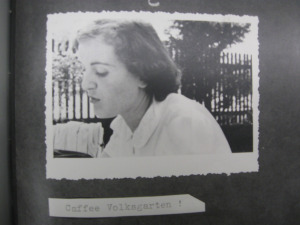
By the time I made the second visit, the years that I’ve spent following the trail of this life, as my novel’s protagonist does, have led somewhere deeper. In much the way I can with photos of those whom I know, I can tell when a day was a joy, or a strain; when a smile was a spontaneous response, or a tight, forced mask.
“May I always stay this way” one typewritten caption proclaims of her 18- or 19-year-old self, who had already met her famous lover, 23 years her senior. She is sitting outside over coffee with friends on what was likely a lovely day in Munich.
Her expression seems guileless, innocent. Those who remember her from this time call her vivacious and effervescent.
In time, a kind of golden-cage captivity muted that, some have observed – and she, herself, kept the tightest lock on that cage, denying her own freedom and possibilities. 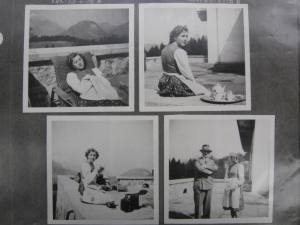
Seven years onto this trail, I troll these hundreds of images again where many are now stored on my computer, watching for the signs of where the shifts came.
Watching for those large and little junctures at which a life was repeatedly bartered away in the shadow of another, to the detriment of its self.
Phyllis Edgerly Ring’s forthcoming The Munich Girl, A Novel of the Legacies That Outlast War, follows a similar trail when its protagonist discovers that her mother had a secret friendship with Hitler’s mistress, Eva Braun.
Find more from the book’s research trail at:
https://www.pinterest.com/phyllisedgerlyr/along-the-research-trail-of-an-ordinary-girl/
Join the mailing list for information about release date and related activities by sending a message with “EB” in the subject line to: info@phyllisring.com.


August 23, 2015
Every plant has its fragrance
GLEANINGS FOUND HERE AND THERE:
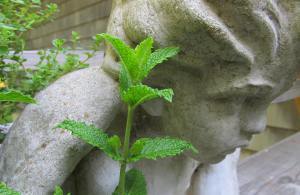
Photo: D. Kirkup / https://www.etsy.com/shop/DKirkupDesigns
Regard thou faith as a tree.
Its fruits, leaves, boughs and branches are, and have ever been,
trustworthiness, truthfulness, uprightness and forbearance.
~ Baha’u’lláh

Photo: David Campbell / http://www.gbctours.com/
What can we gain by sailing to the moon if we are not able to cross the abyss that separates us from ourselves?
This is the most important of all voyages of discovery.
~ Thomas Merton
Most of the shadows of this life are caused by our standing in our own sunshine.

Photo: D. Kirkup / https://www.etsy.com/shop/DKirkupDesigns
~ Ralph Waldo Emerson
The herb is not without its fruit, although it seemeth so, for in this garden of God every plant exerteth its own influence and hath its own properties, and every plant can even match the laughing, hundred-petalled rose in rejoicing the sense with fragrance.
Be thou assured of this.
Although the pages of a book know nothing of the words and the meanings traced upon them, even so, because of their connection with these words, friends pass them reverently from hand to hand.
This connection, furthermore, is purest bounty.
~ ‘Abdu’l-Bahá




